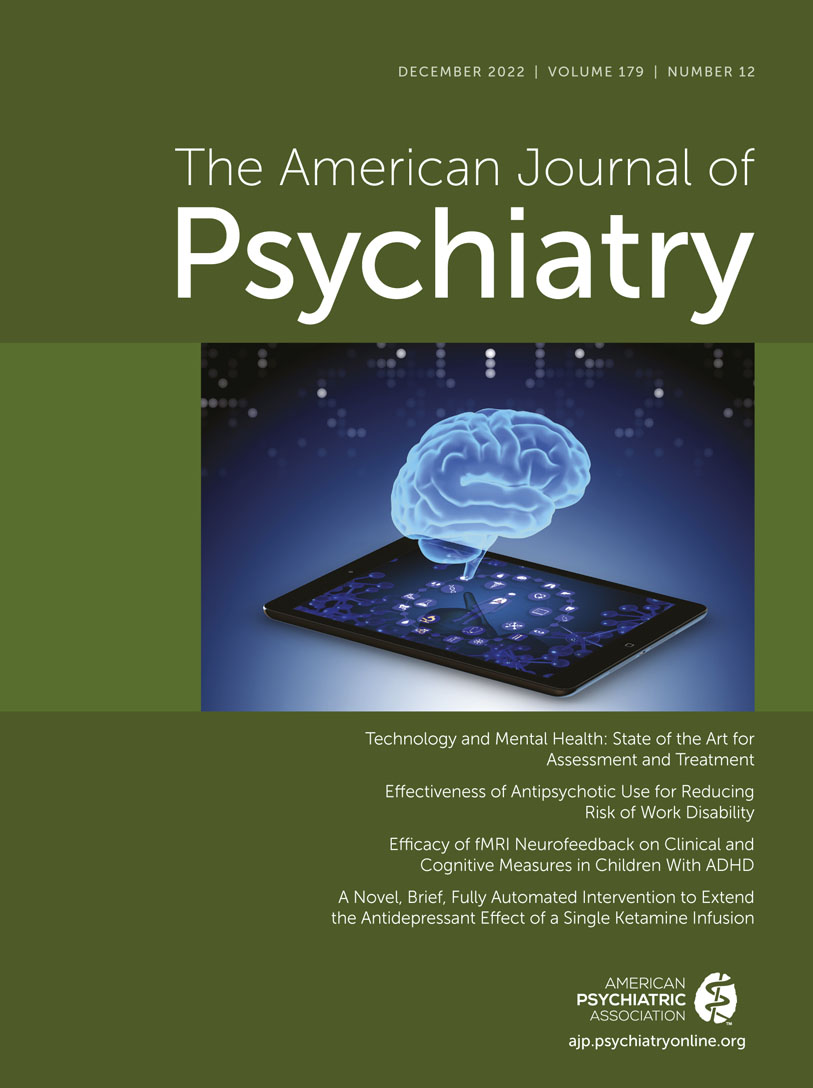A Novel, Brief, Fully Automated Intervention to Extend the Antidepressant Effect of a Single Ketamine Infusion: A Randomized Clinical Trial
Abstract
Objective:
Intravenous ketamine, which displays rapid antidepressant properties, is posited to reverse depression by rapidly enhancing neuroplasticity. The authors tested whether an automated, computer-based approach could efficiently leverage enhanced neuroplasticity to extend the durability of rapid clinical response.
Methods:
A total of 154 adults (ages 18–60) with treatment-resistant unipolar depression were randomized in a double-blind, parallel-arm design to receive an active/active treatment combination (ketamine plus active “automated self-association training” [ASAT]; N=53) or one of two control arms that lacked either the active drug component (saline plus active ASAT; N=51) or the active behavioral component (ketamine plus sham ASAT; N=50). One day after a single infusion of intravenous ketamine (0.5 mg/kg over 40 minutes) or inert placebo (saline), active ASAT—targeting self-worth through automated “evaluative conditioning” training delivered by computer—or sham ASAT (consisting of identical computer tasks that included no positive or self-referential stimuli) was given, delivered twice daily over 4 consecutive days (eight sessions, ≤20 minutes per session). The prespecified primary outcome measure throughout the main (30-day) study period was score on the Montgomery-Åsberg Depression Rating Scale (MADRS).
Results:
Ketamine rapidly and significantly reduced depression scores at 24 hours postinfusion (group-by-time interaction: standardized beta [β]=−1.30, 95% CI=−1.89, −0.70; t=−4.29, df=150). In intent-to-treat linear mixed models, depression scores in the ketamine+ASAT group remained significantly and stably low over the 30-day study period relative to those of the saline+ASAT group (β=−0.61, 95% CI=−0.95, −0.28; t=−3.62, df=148). By contrast, depression scores following ketamine+sham treatment followed a significant, increasing linear trajectory from 24 hours to 30 days, approaching the levels observed in the saline+ASAT group (group-by-time interaction relative to the saline+ASAT group: β=0.015, 95% CI=0.003, 0.03; t=2.35, df=568).
Conclusions:
After priming the brain with ketamine, training positive self-associations could provide an efficient, low-cost, portable, noninvasive, and highly dissemination-ready strategy for leveraging and extending ketamine’s rapid antidepressant effects.



